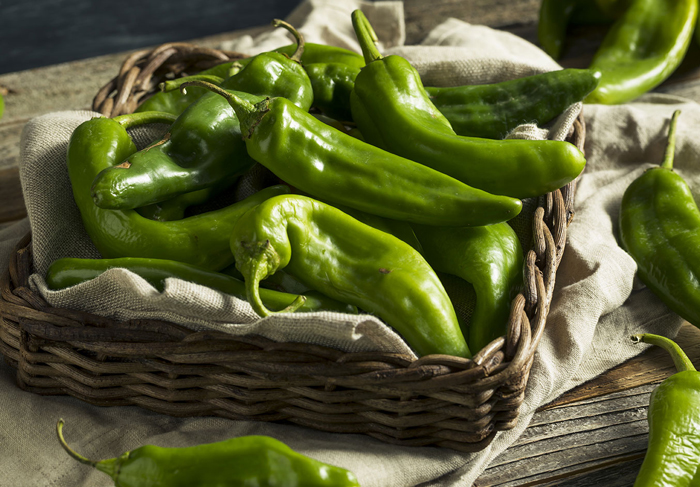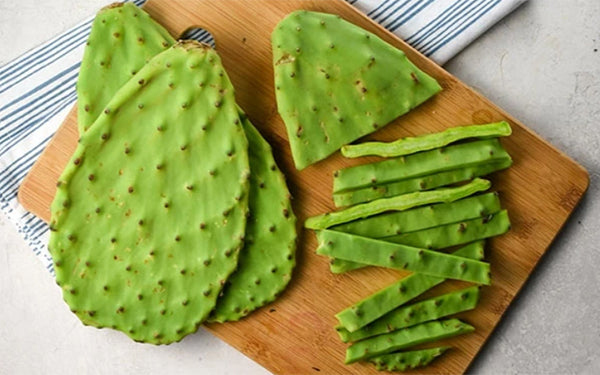The vast tableau of vegetables presents a narrative that’s as much about nutrition as it is about cultural history and culinary exploration. Navigating alphabetically, we arrive at the letter ‘N’, a niche but noteworthy section of this vast edible landscape.
This article offers an invitation to explore the nuances and narratives of the ‘N’-aligned vegetables. From the nourishing napa cabbage, celebrated in Asian cuisines, to the humble navy bean, a staple in many diets, we’ll journey into their unique flavor profiles, health-promoting properties, and cultural significance.
Whether you’re a culinary curator, a vegetable gardener, or simply a curious reader with a penchant for knowledge, come along as we navigate the nourishing and novel world of vegetables that nestle under the nomenclature of the letter “N”.
Vegetables That Start With The Letter N
When it comes to the vast array of vegetables available to us, it’s intriguing to find how many of them are overlooked or less-known, merely because they aren’t mainstream or because of their geographical specificity. One such group belongs to the ‘N’ category. The ‘N’ list of vegetables introduces us to a fascinating array of flavors, textures, and nutritional benefits. This article sheds light on these noteworthy vegetables, exploring their origins, culinary uses, and health benefits.
1. Napa Cabbage
Also known as Chinese cabbage, Napa cabbage boasts tender, pale-green leaves that are crisp yet succulent. Native to East Asia, it’s a staple in dishes like kimchi and various stir-fries. Its mild flavor complements many dishes and it’s packed with vitamins C and K, making it both delicious and nutritious.

2. Nettles
Stinging nettles might not be the first choice for many due to their prickly nature, but once cooked, the sting is neutralized. Widely used in European cuisines, nettles can be turned into soups, teas, or used as a spinach substitute. Beyond their earthy taste, they offer a wealth of iron, calcium, and several essential vitamins.
3. New Zealand Spinach
Despite its name, New Zealand Spinach isn’t a true spinach. It’s heat-tolerant, making it a favorite in warm climates. Its slightly succulent leaves are rich in vitamins A and C and are a fantastic addition to salads and sautées.

4. Nopales
Originating from the prickly pear cactus, nopales are flat, oval leaf pads. Popular in Mexican cuisine, they’re often diced into salads, used in egg dishes, or made into jams. Their taste is similar to green beans with a hint of tartness. Nopales are known to regulate blood sugar levels and are rich in antioxidants.
5. Nori
While often associated with sushi, nori, a type of seaweed, is indeed a vegetable of the sea. It’s consumed across various Asian cuisines and is a powerhouse of nutrients. Particularly rich in iodine, it’s essential for thyroid function. Additionally, it offers vitamins A and C, along with several minerals.

6. Nasturtium
Both the leaves and flowers of the nasturtium plant are edible. With a peppery flavor akin to watercress, they can be used in salads or as garnishes. The bright flowers can also make any dish visually stunning. Rich in vitamin C, they were historically consumed to prevent scurvy.
7. Navy Beans
Although more commonly recognized as a legume, navy beans, in some culinary traditions, are treated and consumed as vegetables. When cooked, they have a soft texture and a mild flavor, making them ideal for soups and stews. These beans are a great protein source and are also rich in dietary fiber, which aids digestion.

8. Nira (Garlic Chives)

Native to East Asia, nira or garlic chives have a flavor profile combining onions and garlic. They are typically chopped and added to dishes like dumplings, stir-fries, and omelets. Beyond their culinary appeal, they are rich in vitamins K and C and have numerous health benefits.
9. Name (Yam Bean)
A root vegetable commonly found in South and Central America, name or yam bean is crunchy with a slightly sweet taste. Eaten raw or cooked, it’s a source of vitamin C and fiber.
10. Neeps

Nestled amongst more familiar vegetables, neeps, also known as swede or rutabaga, often get overlooked. But this humble root holds a surprising depth of flavor and versatility. Native to northern Europe and Asia, neeps have been a staple crop for centuries, prized for their hardiness and ability to thrive in colder climates.
These knobbly, purple-tinged roots are a nutritional powerhouse. Packed with vitamins C and K, fiber, and potassium, they contribute to healthy bones, digestion, and immunity. Neeps are also low in calories and fat, making them a perfect choice for weight-conscious individuals.
But the true magic of neeps lies in their culinary potential. Their sweetness intensifies with cooking, lending themselves to a variety of dishes. Mashed neeps, a classic Scottish comfort food, are a creamy delight when paired with potatoes and butter. Roasted neeps, caramelized and nutty, make a delicious side dish or topping for salads. And don’t forget neep soup, a hearty and warming winter treat.
So, next time you’re at the grocery store, give neeps a chance. Their earthy sweetness, versatility, and nutritional benefits make them a hidden gem worth exploring. Encourage your kids to try neeps in different ways, and you might just discover a new family favorite!
11. New Mexico Chile

New Mexico chiles, with their vibrant colors and fiery heat, are more than just a spice – they’re a cultural icon of the American Southwest. Grown in the sun-drenched valleys of New Mexico for centuries, these chiles have become synonymous with bold flavors and culinary creativity.
From the mild Hatch green chile to the searingly hot Habanero, New Mexico chiles offer a spectrum of heat to suit any palate. Their complex flavor profile, with hints of fruit, earth, and smoke, adds depth and dimension to countless dishes. Whether it’s the iconic green chile cheeseburger, the warming comfort of chile stew, or the fiery kick of salsa, New Mexico chiles take your taste buds on a fiesta.
But beyond their culinary prowess, New Mexico chiles hold cultural significance. Rooted in tradition, they’re celebrated in annual chile festivals and incorporated into art, music, and even literature. Introducing children to New Mexico chiles, even in milder forms, is a way to connect them to a vibrant culture and a love for bold flavors.
So, embrace the heat and add a touch of New Mexico magic to your meals. Encourage your kids to explore the different varieties, starting with milder options, and teach them about the cultural significance of this fiery treasure.
12. Nopalitos

Nopalitos, also known as prickly pear cactus pads, might seem like an intimidating ingredient. But their spiky exterior hides a surprisingly tender and flavorful heart. This unique cactus, native to Mexico and Central America, has been a dietary staple for centuries, prized for its resilience and nutritional value.
Nopalitos are packed with vitamins C and K, fiber, and antioxidants. They’re also low in calories and fat, making them a healthy and satisfying addition to any meal. But beyond their nutritional benefits, nopales offer a distinct flavor profile. Their slightly sour and earthy taste, with a hint of cucumber and green beans, adds a unique dimension to dishes.
Nopalitos are incredibly versatile in the kitchen. Sauteed with onions and garlic, they make a delicious side dish or taco filling. Grilled or roasted, they add a smoky flavor to salads and sandwiches. And don’t forget nopales in soups and stews, where their slightly slimy texture becomes a delightful thickening agent.
So, don’t be afraid of the prickles! Introduce your kids to the wonders of nopales, teaching them how to handle them safely and explore their culinary potential. This unique cactus is a delicious and healthy way to add a touch of Mexican tradition to your meals, and it’s sure to spark curiosity and adventure in young minds.
List of Vegetables Starting with N

| Napa Cabbage | Navy Beans | Neeps |
| Nettles | New Mexico Chile | New Potatoes |
| New Zealand Spinach | Nopales | Nopalitos |
| Nori | Nira (Garlic Chives) | Nasturtium |
Conclusion
The vegetables beginning with ‘N’ open up a world of flavors and textures that may not always be at the forefront of everyone’s palate but are undeniably valuable. Their diverse origins, ranging from the deserts of Mexico to the coasts of Asia, speak of the global richness of our vegetable kingdom. Each vegetable listed here is a testament to the fact that nature has so much to offer, and sometimes, it’s hidden in the less-explored, niche categories. Embracing these ‘N’ vegetables means welcoming a world of taste, health, and culinary adventure. Whether you’re venturing into the slightly tart taste of nopales or enjoying the earthy richness of nettles, there’s a world of discovery awaiting in the ‘N’ category of vegetables.
Vegetables That Start With
A | B | C | D | E | F | G | H | I | J | K | L | M | N | O | P | R | S | T | U | V | W | Y | Z



